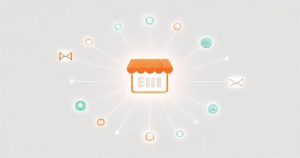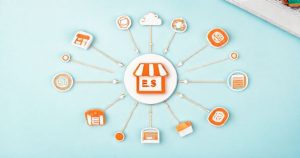For many creative entrepreneurs, Etsy provides an unparalleled platform to showcase unique products and connect with a global customer base. As a shop grows, managing various aspects from inventory to shipping and finances can become increasingly complex and time-consuming. This is where effective Etsy integrations become indispensable, transforming manual tasks into streamlined, automated processes. Understanding how these tools enhance efficiency is crucial for any seller aiming to scale their business while maintaining focus on their craft.
Understanding Etsy Integrations: The Basics for Sellers
Etsy integrations refer to third-party applications or software that connect directly with your Etsy shop, allowing for seamless data exchange and automated workflows. These powerful tools are designed to extend Etsy’s core functionalities, addressing specific business needs such as inventory management, order fulfillment, accounting, and marketing. By leveraging the right integrations, sellers can significantly reduce administrative burdens, minimize errors, and allocate more time to product creation and customer engagement.
The primary goal of implementing Etsy integrations is to enhance operational efficiency and improve the overall selling experience. Whether you manage a small, niche shop or a rapidly expanding enterprise, integrating your Etsy store with specialized software can provide a competitive edge. From automating mundane tasks to offering advanced analytics, these integrations empower sellers to make informed decisions and optimize every facet of their online business, fostering sustainable growth.
Inventory Management Integrations: Keeping Stock in Sync
Accurate inventory management is a cornerstone of any successful e-commerce business, and Etsy shops are no exception. Manually tracking stock levels, especially when selling across multiple platforms, can lead to costly errors like overselling or stockouts. Etsy integrations with dedicated inventory management systems provide a centralized hub for monitoring products, updating quantities in real-time, and ensuring consistency across all sales channels.
Tools like Craftybase, Multiorders, or even integrations with larger platforms like Shopify can synchronize your Etsy listings with other storefronts. This prevents the frustration of selling an item that is no longer available and helps maintain customer satisfaction. By automating inventory updates, sellers gain precise control over their stock, enabling better purchasing decisions and reducing the time spent on administrative inventory tasks.
Shipping and Fulfillment Integrations: Optimizing Your Delivery Process
Efficient shipping is vital for customer satisfaction and repeat business in the e-commerce landscape. Etsy integrations with shipping solutions automate the process of generating labels, calculating postage, and providing tracking information directly to customers. These platforms often offer discounted shipping rates and access to multiple carriers, helping sellers save money and streamline their fulfillment workflow significantly.
Popular shipping integrations include ShipStation, Pirate Ship, and EasyShip, which connect directly with your Etsy orders. They enable batch label creation, automatic tracking number uploads, and even international customs form generation. By integrating these services, sellers can significantly reduce the time spent on shipping logistics, improve delivery speeds, and enhance the overall post-purchase experience for their buyers.
Accounting and Bookkeeping Integrations: Simplifying Financial Tracking
Maintaining accurate financial records is essential for legal compliance, tax preparation, and understanding your business’s profitability. Manually inputting every Etsy transaction into a spreadsheet can be a laborious and error-prone process. Accounting Etsy integrations automate this task by syncing your sales data, expenses, and fees directly with popular bookkeeping software.
Integrations with platforms such as QuickBooks, Xero, or FreshBooks streamline your financial management, providing a clear overview of your income and expenses. These tools can categorize transactions, generate financial reports, and simplify tax season by providing all necessary data at your fingertips. Automating your bookkeeping through Etsy integrations allows you to focus more on creation and less on complex financial reconciliation.
Print-on-Demand and Dropshipping Integrations: Expanding Product Offerings
For Etsy sellers looking to expand their product range without managing physical inventory, print-on-demand (POD) and dropshipping integrations offer compelling solutions. These integrations connect your Etsy shop with manufacturers or suppliers that handle product creation, printing, and direct shipping to your customers. This model significantly reduces overhead costs and eliminates the need for storage space.
Platforms like Printful, Printify, or Gelato integrate seamlessly with Etsy, allowing sellers to design custom products such as apparel, mugs, or home decor. When an order is placed on Etsy, it is automatically sent to the POD provider for fulfillment. While profitability margins might differ from handmade items, these integrations enable sellers to diversify their offerings and tap into new market segments with minimal upfront investment.
Multichannel Selling Integrations: Reaching Wider Audiences
Many Etsy sellers eventually consider expanding their reach beyond the platform, exploring other marketplaces or setting up their own e-commerce websites. Multichannel selling integrations are crucial for managing listings, inventory, and orders across various sales channels efficiently. These tools ensure consistency and prevent logistical nightmares associated with disparate systems.
Integrations connecting Etsy with platforms like Shopify, Amazon Handmade, or eBay allow for centralized management of product data and order processing. This not only increases brand visibility and sales potential but also reduces the risk of overselling or duplicate listings. By leveraging multichannel Etsy integrations, sellers can strategically grow their presence across the digital landscape while maintaining control over their entire product catalog.
Marketing and Email Integrations: Growing Your Etsy Shop
Effective marketing is key to attracting new customers and fostering loyalty among existing ones. Etsy integrations with marketing tools, particularly email marketing platforms, enable sellers to build strong customer relationships and drive repeat purchases. These integrations automate the process of collecting customer emails, sending newsletters, and running targeted promotional campaigns.
Connecting your Etsy shop with services like Mailchimp, ConvertKit, or Klaviyo allows you to segment your audience, personalize communications, and track campaign performance. This helps in nurturing leads, announcing new product launches, and offering exclusive discounts to loyal customers. By leveraging these marketing Etsy integrations, sellers can create compelling campaigns that encourage engagement and ultimately boost sales.
Choosing the Right Etsy Integrations for Your Business
Selecting the most suitable Etsy integrations requires a clear understanding of your specific business needs, current challenges, and future growth objectives. Begin by identifying the areas of your business that consume the most time or present the greatest inefficiencies. Whether it is inventory tracking, shipping logistics, or financial reconciliation, prioritize integrations that address these critical pain points first.
Consider the cost-effectiveness of each integration, evaluating its features against its price point and potential return on investment. Many integrations offer free trials, allowing you to test their functionality and compatibility with your workflow before committing. By strategically implementing Etsy integrations, sellers can optimize operations, enhance customer satisfaction, and ultimately foster the sustainable growth of their creative ventures.





